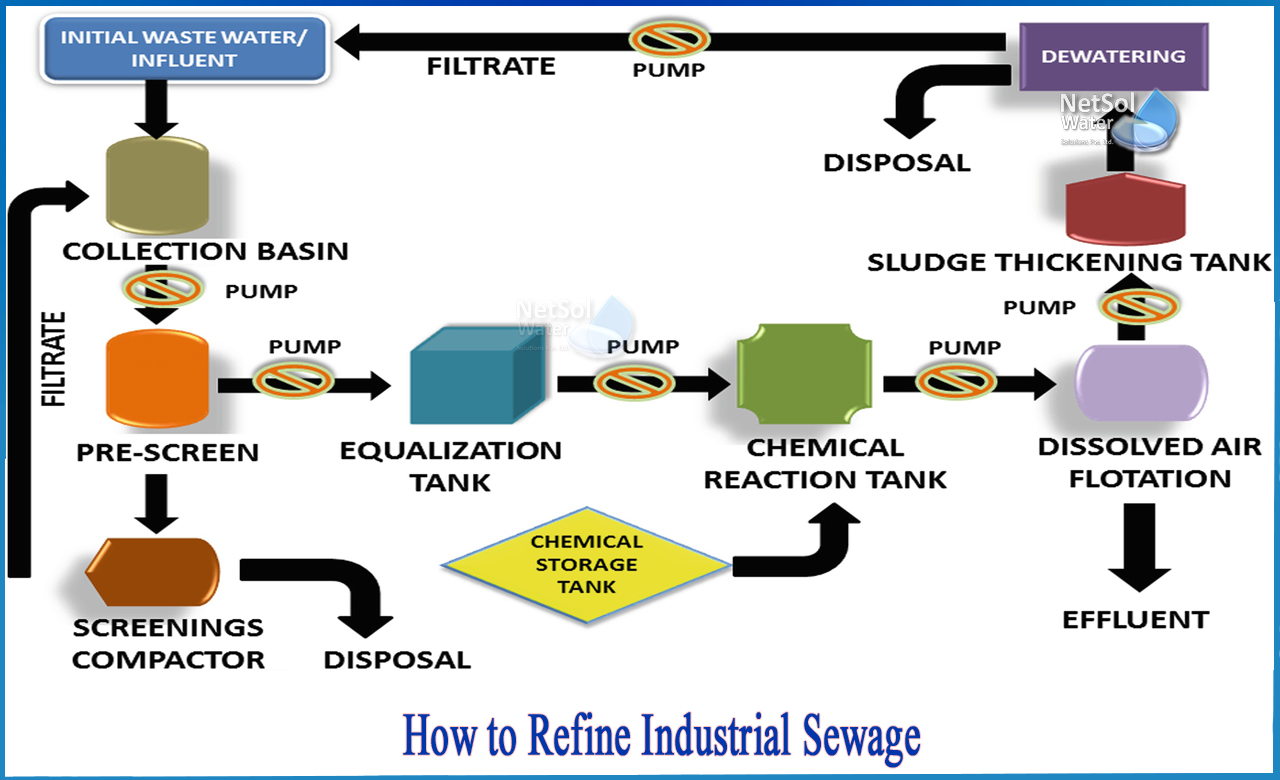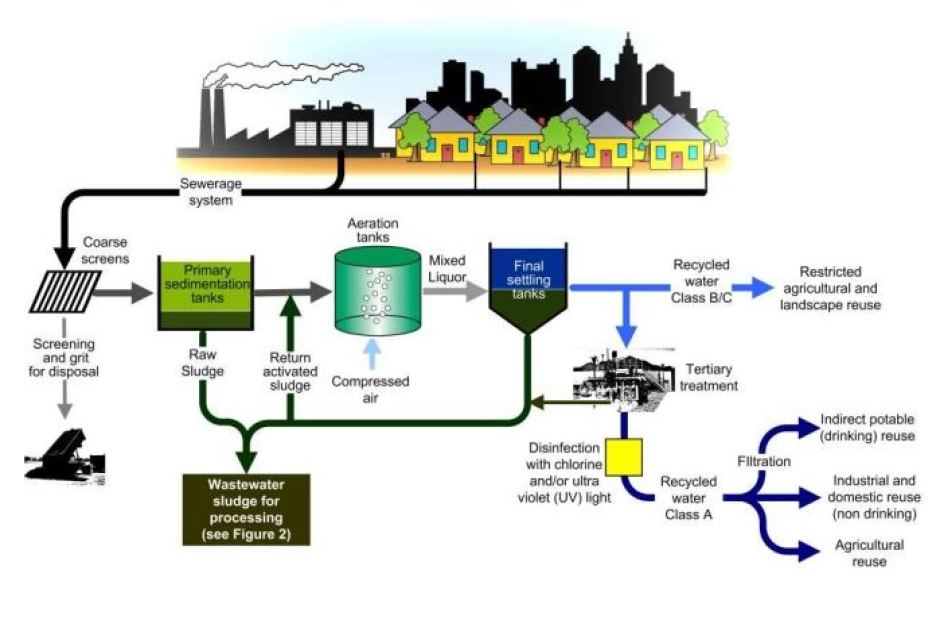Industrial Waste Water Treatment-- Sustainable Solutions for Industrial Water Administration
Industrial Waste Water Treatment-- Sustainable Solutions for Industrial Water Administration
Blog Article
Secret Strategies in Industrial Waste Water Therapy Procedures
The treatment of commercial wastewater is a critical facet of environmental administration, including a range of methods designed to mitigate the influence of impurities. Innovations in modern technologies such as membrane filtering and progressed oxidation processes supply innovative services for improving treatment effectiveness.
Physical Treatment Techniques
Exactly how efficiently can physical therapy methods resolve the complexities of commercial wastewater? Physical therapy methods play a critical role in the preliminary phases of wastewater monitoring, focusing largely on the elimination of solids and large particulates. Techniques such as sedimentation, flotation, and purification are essential for minimizing the concentration of suspended solids, thus boosting the efficiency of succeeding therapy procedures.
Sedimentation includes the gravitational settling of solids, allowing for the splitting up of much heavier products from the wastewater. This technique is especially efficient in clarifying water prior to biological or chemical therapies.
Furthermore, flotation techniques, which utilize air bubbles to lift suspended solids to the surface area for removal, are effective in treating wastewater with high concentrations of fats, oils, and greases. Overall, physical therapy techniques work as a critical first action in the thorough monitoring of industrial wastewater, making sure that the load on subsequent therapy phases is decreased and boosting general therapy efficiency.
Chemical Treatment Strategies
While physical therapy approaches lay the groundwork for effective wastewater management, chemical treatment strategies are essential for resolving the extra complicated pollutants typically discovered in commercial effluents. These techniques make use of various chemical agents to speed up, reduce the effects of, or oxidize hazardous substances, ensuring a much more complete elimination of pollutants.
One usual approach is coagulation and flocculation, where chemical coagulants such as light weight aluminum sulfate or ferric chloride are contributed to promote the gathering of put on hold particles. This procedure enhances solid-liquid separation, minimizing turbidity and enhancing water quality. Furthermore, neutralization processes are utilized to change the pH of wastewater, utilizing acids or bases to neutralize acidic or alkaline streams, respectively.
Oxidation-reduction reactions play a critical duty in degrading organic pollutants and microorganisms. Chemical oxidants like chlorine, hydrogen, or ozone peroxide are made use of to damage down complex organic compounds, making them much less damaging or a lot more naturally degradable. Progressed oxidation processes (AOPs) incorporate several oxidation strategies to improve contaminant elimination effectiveness.
Organic Treatment Procedures
The efficiency of wastewater treatment is dramatically enhanced by biological therapy processes, which harness the natural metabolic tasks of microorganisms to break down raw material and eliminate toxins. Industrial Waste Water Treatment. These procedures mainly entail cardio and anaerobic digestion, each customized for certain sorts of wastewater
Cardiovascular therapy processes make use of oxygen to sustain microbial development, promoting the failure of natural pollutants into carbon dioxide and water. Usual methods include triggered sludge systems, where aeration containers help with the mixing of wastewater with bacteria, and dripping filters, which urge biofilm advancement on media surface areas.
Conversely, anaerobic therapy procedures occur in the lack of oxygen, making use of anaerobic germs to decompose organic matter, resulting in biogas production, a renewable power source. Anaerobic digesters are often employed in industrial settings for this function, properly minimizing the quantity of sludge while creating beneficial biogas.
The option of a biological therapy approach depends upon wastewater qualities, therapy goals, and regulatory standards. The integration of organic procedures in wastewater treatment not just improves toxin elimination performance but likewise promotes sustainability by minimizing chemical use and supporting source recovery.
Advanced Oxidation Processes

Common AOP methods include Fenton's reagent, ozonation, and you could try here photocatalysis. Fenton's reagent, a mix of hydrogen peroxide and ferrous iron, militarizes the formation of hydroxyl radicals, making it reliable for treating wastewater having phenolic substances and various other recalcitrant materials. Ozonation makes use of ozone as an effective oxidant, efficient in weakening a vast array of natural pollutants while at the same time sanitizing the effluent. Photocatalysis employs light-activated stimulants, such as titanium dioxide, to enhance oxidation reactions and remove pollutants.
AOPs use numerous benefits, including minimized sludge manufacturing and the capability to treat wastewater with high focus of organic contaminants. Nevertheless, the application of AOPs requires cautious consideration of functional criteria and cost-effectiveness, guaranteeing that these advanced techniques are properly incorporated right into existing wastewater treatment systems.
Membrane Filtering Technologies

Microfiltration is effective for eliminating suspended solids and bacteria, while ultrafiltration targets smaller natural molecules and infections. Nanofiltration links the space between ultrafiltration and reverse osmosis, properly eliminating divalent ions and natural substances. Reverse osmosis gives the highest degree of purification, utilized mostly for desalination and eliminating mono-valent ions.
Membrane modern technologies provide countless advantages, consisting of reduced power usage contrasted to traditional therapy techniques, modular design for scalability, and the possibility for water healing and reuse. Challenges such as membrane layer fouling and the requirement for routine upkeep need to be addressed to make certain system efficacy. Overall, membrane layer filtering technologies represent a vital part of contemporary industrial wastewater therapy approaches, promoting sustainability and resource preservation in water administration.
Verdict
In verdict, industrial wastewater treatment uses a diverse selection of methods, including physical, chemical, biological, and progressed techniques. Proceeded innovations in these approaches will certainly better improve the efficiency and efficiency of wastewater treatment procedures in commercial settings.
The treatment of commercial wastewater is an important element of environmental administration, including a range of techniques created to minimize the influence of impurities.How effectively can physical therapy techniques attend to the intricacies of industrial wastewater?Advanced oxidation procedures (AOPs) stand for a sophisticated technique in commercial wastewater treatment, designed to effectively degrade natural toxins that are typically resistant to traditional treatment methods (Industrial Waste Water Treatment).In final thought, industrial wastewater therapy utilizes a diverse variety of strategies, consisting check out here of physical, chemical, biological, and advanced techniques. Continued developments in these methodologies will further improve the effectiveness and performance of wastewater therapy processes in commercial settings
Report this page